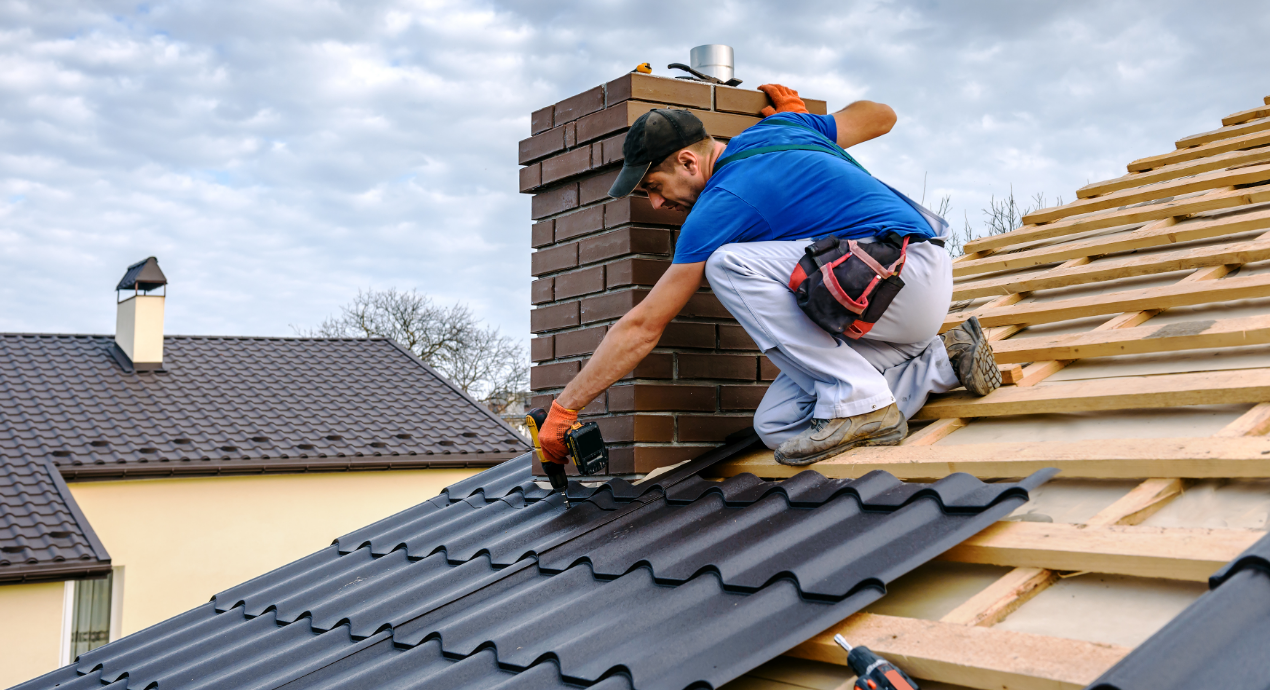Roof Repair Oahu: Quick and Affordable Roof Takes Care Of Near You
Roof Repair Oahu: Quick and Affordable Roof Takes Care Of Near You
Blog Article
Understanding the Various Sorts Of Roofings: A Comprehensive Overview for Homeowners
In the realm of homeownership, selecting the ideal roof covering style is a decision that carries substantial implications for both performance and visual allure. With a range of alternatives-- varying from the typical gable to the modern flat-- each kind presents unique benefits and challenges that must straighten with the homeowner's specific requirements and ecological considerations. Comprehending these distinctions not only help in making an informed choice however likewise influences lasting maintenance and energy efficiency. As we explore the ins and outs of different roofing system types, it ends up being apparent that one dimension does not fit all; the best option may surprise you.
Saddleback Roof
Saddleback roofs, defined by their triangular form, are amongst one of the most prominent roof covering styles due to their simplicity and efficiency in dropping water and snow. This design features 2 sloping sides that satisfy at a ridge, enabling efficient water drainage and decreasing the risk of water build-up. The steep pitch typically connected with saddleback roofs enhances their ability to handle hefty precipitation, making them appropriate for numerous climates.
In addition to their practical benefits, saddleback roofs offer visual adaptability. They can be adapted to different building styles, from conventional to modern-day homes. The style can also fit additional features such as dormer home windows, which boost natural light and ventilation in the attic room.
Additionally, saddleback roofs offer enough area for insulation, contributing to power efficiency. Homeowners can pick from a selection of roof products, consisting of asphalt roof shingles, steel, and floor tiles, additionally boosting personalization alternatives.
Despite their benefits, gable roof coverings may require added support in areas vulnerable to high winds or hefty snowfall. Generally, the saddleback roof remains a favored option due to its mix of capability, durability, and aesthetic charm.
Flat Roofs
Flat roofs are commonly acknowledged for their minimalist layout and practical applications, particularly in commercial and business setups (oahu roofing). These roof coverings feature a nearly straight or straight surface area, which enables very easy construction and versatile room use. While they may do not have the visual appeal of angled roofs, flat roofings provide countless advantages, especially in urban settings where optimizing area is critical
One of the primary benefits of level roofings is their accessibility. Homeowners can utilize the roof covering area for different objectives, such as rooftop gardens, terraces, or photovoltaic panel installations. Additionally, flat roofing systems are usually more cost-efficient to maintain and install contrasted to their sloped equivalents, as they require fewer products and labor.
However, flat roofs do present specific obstacles. Proper water drainage is vital to avoid water pooling, which can lead to leakages and structural damages. Therefore, selecting high-quality waterproofing products and routine examinations are critical for making sure longevity. Usual products used for flat roofings include built-up roof covering (BUR), changed bitumen, and single-ply membranes, each offering distinct benefits. In general, flat roofs function as a practical and adaptable option for several property owners and companies alike.
Hip Roofs
Hip roofing systems are identified by their sloped sides that merge on top, creating a ridge. This design is distinctive from saddleback roofs, as all four sides of a hip roof covering slope downwards toward the wall surfaces, offering a much more stable framework. The angle of the inclines can differ, enabling for adaptability in building looks and functionality.
One of the main benefits of hip roof coverings is their ability to stand up to hefty winds and damaging weather. The sloped surfaces allow better water drain, lowering the danger of leakages and water damage. Additionally, hip roof coverings offer boosted attic area, which can be made use of for storage or perhaps transformed into habitable areas.
Nevertheless, creating a hip roofing system can be a lot more pricey and complex than easier roofing types, such as saddleback roofs. The added product and labor entailed in creating the slopes and making sure appropriate structural stability can bring about higher expenditures. In spite of these disadvantages, numerous house owners favor hip roofing systems for their sturdiness, visual appeal, and possibility for power performance.
Mansard Roofing Systems
Mansard roofs, frequently acknowledged by their unique four-sided layout, function 2 inclines on each side, with the lower slope being steeper than the top. This building style, originating from France in the 17th century, is not only cosmetically appealing however functional, as it optimizes the useful area in the upper floors of a structure. The steep reduced slope permits for more clearance, making it an optimal option for lofts or attics, which can be exchanged living areas.
Mansard roof coverings are identified by their flexibility, suiting numerous architectural styles, from standard to contemporary. They can be created with different products, including asphalt roof shingles, slate, or metal, offering house owners with a variety of choices to suit their preferences and spending plans. Furthermore, the style enables the assimilation of dormer windows, improving all-natural light and ventilation in the upper levels.
However, it is vital to think about the possible disadvantages. Mansard roofs might require even more upkeep because of the complexity of their layout, and their steep slopes click to read can be testing for snow and rain runoff. On the whole, mansard roofs incorporate elegance with usefulness, making them a prominent option amongst homeowners seeking distinct building features.
Lost Roofings
As property owners progressively look for simplicity and functionality in their building styles, dropped roofs have actually arised as a preferred selection. Defined by a solitary sloping aircraft, a shed roof covering provides a minimalist visual that matches various home designs, from contemporary to rustic.
One of the main benefits of a shed roof is its uncomplicated construction, which frequently translates to reduce labor and material costs. This style enables effective water drainage, lowering the risk of leaks and water damages. In addition, the upright incline offers sufficient space for skylights, boosting all-natural light within the inside.
Lost roofing systems additionally supply versatility in terms of use. They can be successfully integrated right into additions, garages, or outdoor frameworks like structures and sheds. Furthermore, this roofing design can accommodate different roof materials, consisting straight from the source of metal, asphalt shingles, or perhaps green roofs, straightening with environment-friendly initiatives.
Nonetheless, it is vital to consider regional climate problems, as heavy snow lots might require adjustments click for more to the roof's angle or structure. On the whole, dropped roofing systems present a functional and visually pleasing alternative for home owners seeking to maximize functionality without compromising design.
Conclusion


Gable roof coverings, defined by their triangular form, are among the most popular roof covering designs due to their simplicity and performance in dropping water and snow. oahu roofing. The high pitch frequently connected with gable roofing systems improves their ability to manage heavy precipitation, making them appropriate for different environments
While they may lack the aesthetic appeal of pitched roofs, flat roofings supply many advantages, especially in metropolitan settings where optimizing room is important.

Report this page